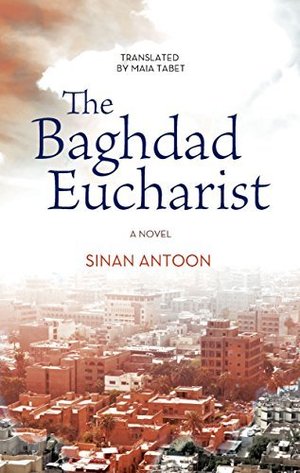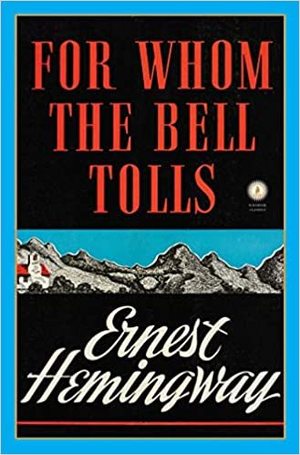Iraqi author Sinan Antoon published his 2012 Arabic novel Ya Maryam (“Oh Mary”) in English as The Baghdad Eucharist. Both titles are meaningful, although their meaning unfolds only at the end of the book. One of the central characters is Maha, a young married woman living through the terrors of post-2003 Baghdad. Maha loses her unborn child when a bomb explodes near the house she is living in. She is overcome by grief.
Maha begins to listen, almost compulsively, to the spiritual songs of the Lebanese artist Fairuz. She is obsessed with Fairuz’s meditations on the suffering endured by the Virgin Mary as she saw her tortured son hanging on the cross, as her heart was pierced. Maha, who takes her turn as narrator in Antoon’s masterful work, relates, “Fairuz voiced all my pain and conveyed perfectly how my heart was encased in a wreath of thorns, along with everything else:
I am the mother of sorrows, with no one to console her,
May the death of your son be a life for those who seek it,
The mother of Jesus wept, and her onlookers wept,
I pity a nation that kills its shepherd.”

Fairuz’s hymn evokes the line from John’s Gospel which serves as the book’s epigraph: “He came unto his own, and his own received him not.” The epigraph (and the hymn) captures the desolation that Maha experiences in her own country, a society where she is compelled to wear a hijab to avoid sexual harassment on the streets, where Christians are not only accused of heresy but also victims of kidnappings and bombings.
The other central character in The Baghdad Eucharist is Youssef (“Joseph”), the uncle of Maha’s husband. Youssef remembers a time when Iraq was more secular, cherishes his friendships with Muslims and reminisces about the one love of his life, a young Muslim woman named Dalal. The book begins with a fight between Youssef and Maha over the possibility for coexistence in Iraq. It ends with Youssef’s death.
Both Youssef and Maha find themselves at a service in the Syrian Catholic church Sayyidat al-Najat (“Our Lady of Deliverance”) on October 31, 2010, when militants (some of them foreigners) of the Islamic State of Iraq, which would later morph into ISIS, assaulted the worshippers, killing 58 of them. According to Maha’s account, which concludes the book, the militants shouted, “Heathens! Nothing but heathens, worshipping the cross!” As one of the priests was shot he kept repeating, “Father, my spirit is in your hands.” The priest’s blood, mixed with the blood of the other worshippers, spills out in the church. It is then that the reader understands why the English translation of Antoon’s book was given the title The Baghdad Eucharist.
Maha and Youssef do not see each other in the church, and they never resolve the fight with which the book opens. It is an irony, I suppose, that Maha survived while Youssef, who never lost his optimism for Iraq’s future, did not. Yet the two characters are joined together by our sorrowful Mother. Antoon relates for us Youssef’s final prayer as he lay dying in a church dedicated to Mary’s deliverance: Ya Maryam.
Ernest Hemingway’s For Whom the Bell Tolls (1940) also ends in death. On the final page its main character, the American mercenary Robert Jordan, lies dying with a crushed leg, waiting in ambush to kill the fascists pursuing him. Hemingway tells us in a line as simple as it is meaningful: “He could feel his heart beating against the pine needle floor of the forest.”
Jordan finds his way to that forest when he is sent on a mission to blow up a bridge in coordination with an offensive of the Spanish Republicans. While the action in The Baghdad Eucharist unfolds in a single day, For Whom the Bell Tolls unfolds in three days. On the first day Jordan joins a small band of Republican militants hiding out in a cave behind enemy lines. On that same day he meets and falls passionately in love with Maria, a young woman who had previously watched her parents murdered by fascists, and who had been raped repeatedly.

Jordan’s love for Maria is indistinguishable from his love for the ideals for which he is fighting: “I love thee as I love all that we have fought for. I love thee as I love liberty and dignity and the rights of all men to work and not be hungry. I love thee as I love Madrid that we have defended and as I love all my comrades that have died. And many have died. Many. Many. Thou canst not think how many. But I love thee as I love what I love most in the world and I love thee more.”
On the third day Jordan’s horse is struck by a cannon shell and falls on him, crushing his leg. Knowing that he cannot go on, he bids farewell to his love on the pine needle carpet of the forest floor: “Thou wilt go now, rabbit. But I go with thee. As long as there is one of us there is both of us. Do you understand?” After Maria leaves he tries to convince himself of what he has just said: “Try to believe what you told her. That is the best. And who says it is not true? Not you. You don’t say it, any more than you would say the things did not happen that happened. Stay with what you believe now.”
Yet For Whom the Bell Tolls is not (only) about romantic love, and Robert’s thoughts turn quickly to his death: “You better get fixed around some way where you will be useful instead of leaning against this tree like a tramp. You have had much luck. There are many worse things than this. Every one has to do this, one day or another.”
Through the course of the book we learn that Jordan is haunted by the suicide of his father, a religious man who was (to Jordan) a coward. Jordan remembers the teary goodbye of his father the day he left to go to college in Montana with embarrassment. He venerates instead his grandfather, a hero of the civil war who notched many kills. Jordan wishes his grandfather were there to see him wounded in the Spanish forest, preparing to kill some fascists as a last act.
To Jordan, part of dying well, dying courageously, is the refusal to find comfort in religion: “Who do you suppose has it easier? Ones with religion or just taking it straight? It comforts them very much but we know there is no thing to fear.”
Yet not everyone in For Whom the Bell Tolls has shaken off religion.
Toward the beginning of the book, Anselmo, another guerilla and friend of Jordan, expresses his longing for God in a curious way: “Since we do not have God here any more, neither His Son nor the Holy Ghost, who forgives? I do not know.” He goes on to reflect, “Clearly I miss Him, having been brought up in religion.” Towards the end of the book, facing the possibility of death at the impending attack, Anselmo turns again to God, and to the Blessed Virgin Mary, praying the final lines of the Salve Regina, “Most kind, most sweet, most clement Virgin.” Maria too, terrified that Robert will die, turns to our tender Mother as she waits with the horses during the operation: “Sweet Blessed Virgin, bring him back to me from the bridge and I will do anything thou sayest ever.”
The title of Hemingway’s book comes from a line of the English poet John Donne (a Catholic who was perhaps compelled to convert to Anglicanism), from among his meditations on funeral tolling. The section of the poem that makes up the book’s epigraph opens: “No man is an Iland, intire of it selfe; every man is a peece of the Continent.”
No man is an island. How sad then is the image of Robert Jordan lying in a Spanish forest, completely alone, hoping only to die courageously by taking some fascists down before he goes. What a contrast with the image of Youssef dying in that Baghdadi church, together with fellow believers, with a prayer to the heavenly mother on his lips.
Gabriel Said Reynolds, a Notre Dame professor of Islamic studies and theology, is the author most recently of Allah: God in the Qur’an and a host of the Minding Scripture podcast. Follow him on Twitter at @GabrielSaidR.